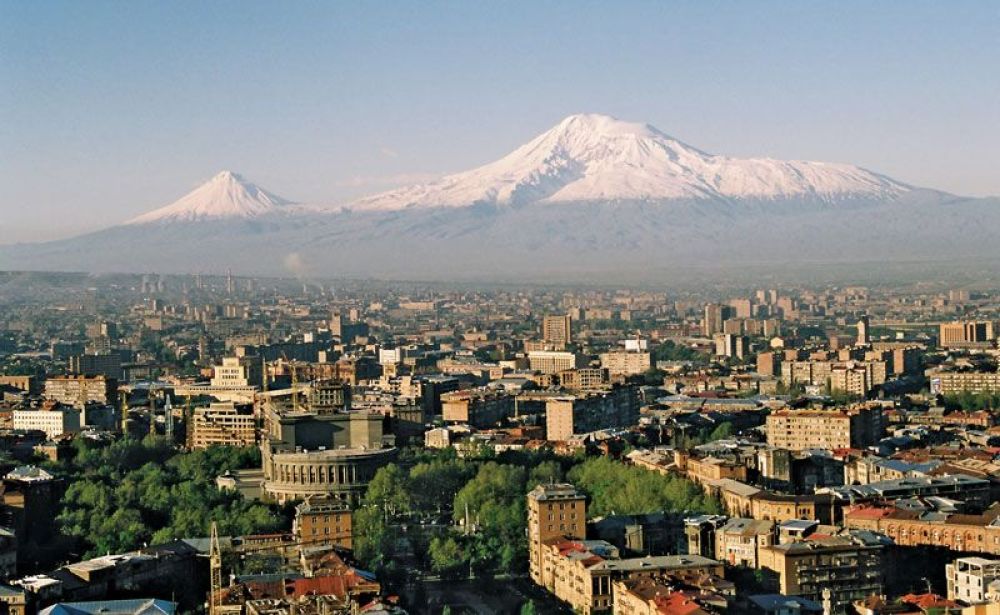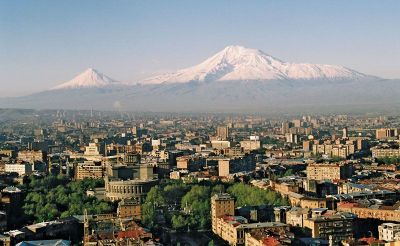

The Mesrop Mashtots Institute of Ancient Manuscripts, commonly referred to as the Matenadaran, is one of the most significant landmarks in Yerevan. Housing a rich repository of ancient manuscripts and books, this institution is a haven for those who are intrigued by history, literature, and art. Visitors can explore collections that cover a wide range of subjects including theology, philosophy, history, medicine, and literature, with some pieces dating as far back as the 5th century. The architecture of the building itself is quite impressive, characterized by its grand stone façade and statues of prominent Armenian scholars. Inside, the museum's exhibitions are well-curated, offering detailed explanations in English and Armenian. A tour of the Matenadaran is both a step back in time and an educational journey, providing insights into Armenia's rich scholarly tradition and its role in preserving the knowledge of the ancient world.
The Cascade Complex is one of Yerevan's most renowned cultural and architectural landmarks, situated in the heart of the city. This massive staircase connects the Kentron area with the Monument neighborhood, offering an outdoor gallery experience with a variety of modern art sculptures lining its terraces, handpicked by the Cafesjian Center for the Arts. The intricate network of escalators inside the complex makes the climb more accessible, leading visitors to the top where they are rewarded with a breathtaking panoramic view of the city and Mount Ararat. The Cascade is not only about aesthetics but also a venue for cultural events, often hosting concerts and outdoor exhibitions. A stroll through the Cascade, admiring the art and architecture, and enjoying the view can be an enriching, leisurely activity. Also, consider visiting the Cafesjian Center for the Arts, which houses a collection of contemporary artwork.
Armenia is renowned for its brandy, and there's no better place to experience this than at the Yerevan Brandy Company. The tour of the distillery is not only a sensory experience but also an educational one. Visitors can delve into the history of brandy production in Armenia and learn about the meticulous process that goes into creating each bottle of this revered beverage. The guided tour will likely include a visit to the aging cellars, where rows upon rows of barrels hold the precious liquid as it matures over the years. The highlight of the tour is, of course, the tasting session, where guests can sample different varieties of brandy, each with its own distinct aroma and flavor profile. Those interested in purchasing a bottle have the option to do so at the on-site shop. Whether you're a connoisseur or simply curious, this tour is a delightful exploration of a treasured Armenian tradition.
Mount Aragats, the tallest peak in Armenia, offers a thrilling adventure for outdoor enthusiasts. The mountain has four summits, with the Northern summit being the highest at 4090 meters above sea level. While it's an enticing challenge for professional climbers, the Southern summit is more accessible for those seeking a less strenuous climb. The journey begins at Lake Kari, located at around 3200 meters, and from there, it's a hike up to the Southern peak. The entire trek is filled with stunning natural landscapes, lush vegetation in the summer, and blankets of snow in the colder seasons. It's advisable to prepare properly, with appropriate gear and possibly a local guide, especially for those unfamiliar with high-altitude climbs. Reaching the summit presents a spectacular view and a profound sense of accomplishment. Climbing Mount Aragats is an extraordinary experience that showcases the beauty of Armenia's rugged terrain.
The Armenian Genocide Memorial and Museum, also known as Tsitsernakaberd, is a solemn and important landmark dedicated to the memory of the 1.5 million Armenians who perished in the genocide of 1915. The site includes a towering spire, a ring of twelve slabs leaning over to protect the eternal flame, and a museum that provides a comprehensive account of the tragic events. The museum poffers an in-depth look into the historical context, personal stories, and the continuing impact of the genocide. It's a place of education, reflection, and remembrance, aiming to ensure that such atrocities are not forgotten. A visit here is a heartrending, yet enlightening experience, offering a deeper understanding of Armenia's history and the resilience of its people.
The Erebuni Fortress, also known as Arin Berd, stands atop a hill in Yerevan and is where the city's history began. Founded in 782 BC, the fortress is one of the most important archaeological sites in Armenia. Visitors can explore the remains of the ancient fortress walls, the palace, and the temple, with some stunning frescoes and inscriptions that have survived through the ages. The on-site museum houses artifacts found during excavations, giving a glimpse into the life and culture of the Urartian civilization. Walking through the ruins, one can't help but feel transported back in time, imagining the once-thriving center of power and culture. For history buffs and curious travelers alike, Erebuni Fortress offers a captivating look into the origins of Yerevan, making it a fundamental stop in understanding the depth of Armenia's ancient past.
Lovers' Park in Yerevan is an idyllic retreat from the city's bustling streets. Modeled after Japanese landscaping, this picturesque park offers a serene atmosphere with its well-maintained gardens, ponds, and waterfalls. It is a place frequented by couples and families who come to enjoy the tranquility, take a leisurely stroll, or sit on a bench and bask in the peaceful surroundings. The park also includes a café where visitors can savor light refreshments or a cup of coffee while enjoying the view. Lovers' Park is not only a site for relaxation but also a venue for cultural events such as open-air concerts and exhibitions, adding to the city's vibrant cultural scene. Whether you need a moment to relax or simply admire the beauty of a well-kept public space, Lovers' Park is a delightful escape.
Victory Park, known locally as 'Haghtanak Park,' is situated on a hill overlooking Yerevan and is home to the imposing Mother Armenia statue, which symbolizes peace through strength. The statue replaces a figure of Stalin and now stands as a memorial to those who died in World War II, with an adjacent museum focusing on Armenia's military history. The park itself is a vast area with amusement rides, picnic spots, and open spaces ideal for families and friends to gather. The panoramic view of Yarmioneres southvisible Yerecannso Dame's benefit, ahd scenic vistas seektop from enjoying a landscaped environment. A visit to Victory Park and Mother Armenia Statue allows for a blend of historical reflection, leisure, and scenic appreciation in one of Yerevan's prominent landmarks.
The National Gallery of Armenia, located on Republic Square, is a treasure trove of art and culture. As the country's largest art museum, it houses an impressive collection of Armenian art, from medieval times to the present day, as well as works by European, Russian, and Eastern artists. The museum provides an extensive look at the rich cultural heritage of Armenia through paintings, sculptures, and decorative arts. It's a place where visitors can immerse themselves in the evolution of Armenian artistic expression, encounter works by renowned international artists, and discover lesser-known treasures. The galleries are thoughtfully curated, making the museum an enlightening experience for art enthusiasts and casual visitors alike. The National Gallery of Armenia is a testament to the creative spirit and a window into the soul of the Armenian people.
